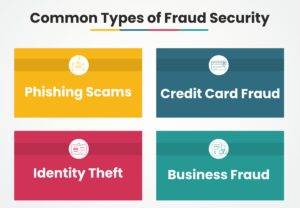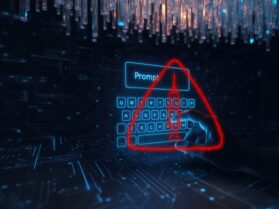Imagine receiving a call from your bank asking for account verification and other details. And a few minutes later, find your bank account empty. The fraud calls by scammers got all the details. And left you without money. Fraud is everywhere, be it online shopping, emails, or even fake job offers. And to prevent this, you need fraud security.
Fraud security is like an online shield against such attacks. As a personal or business user, knowing how fraud operates and how to prevent it will help you to keep out of trouble. Let's dive into the main elements of fraud prevention, the typical scams that exist, and how technology such as AI is fighting back against such scams.
What is Fraud Security?
Fraud security is a set of tools, rules, and practices that are designed to stop scams before they happen. It helps businesses and individuals in identifying, avoiding, and reacting to fraudulent transactions.
Think of it as a security guard for your finances and sensitive data. In its absence, hackers and scammers can easily trick you into giving away sensitive details.
Why Is Fraud Security Important?
-
- Protects Your Money: Fraudsters are always finding ways to steal data or information. Without fraud prevention, they can steal money from your bank account, make unauthorized purchases, or even take out loans using your name.
- Keeps Personal Information Safe: Your name, social security number, address, and passwords are gold for scammers. Fraud security prevents hackers from misusing your identity.
- Establishes Trust in Businesses: If a company gets hacked, consumers lose trust in it. Strong fraud security helps companies in keeping their reputation intact.
- Avoid Legal Issues: If fraud happens because of weak security, businesses can face lawsuits and fines. Staying protected avoids these headaches.
Common Types of Fraud & How They Work
1. Phishing Scams: The Fake Email Trick
You get an email from your bank, and it appears to be real. It asks you to click a link and enter your password. But it’s fake! Once you put in your details, attackers steal your data.
How to Spot It:
-
- Check the sender’s email.
- Check the links before clicking.
- Real companies won’t ask for passwords via email.
2. Credit Card Fraud: When Someone Else Uses Your Card
A thief gets your card details and starts shopping online. You only notice when you see strange transactions.
How to Stay Safe:
-
- Use virtual cards for online payments.
- Enable transaction alerts on your phone.
- Never share your CVV number unnecessarily.
3. Identity Theft: Stealing Your Life
Someone uses your personal info (like your social security number) to open bank accounts, take loans, or even get medical treatment, all under your name.
How to Prevent It:
-
- Freeze your credit if you suspect fraud.
- Use strong, unique passwords everywhere.
- Shared documents with personal details before throwing them away.
4. Business Fraud: Fake Invoices & CEO Scams
Scammers send fake bills to companies, hoping they will pay without checking. Another trick? Or they pretend to be the CEO and ask employees to transfer money urgently.
How Businesses Can Fight Back:
-
- Double-check all payment requests.
- Train employees to recognize scams.
- Use multi-step approval for big transactions.
What are the Main Elements of Fraud Security?
Fraud security is not a single entity. It is a combination of tools, habits, and intelligent systems in harmony. Here is what makes it strong:
Detection: Check for suspicious activity before any type of damage.
Prevention: Stopping fraud attempts in their tracks.
Response: Act fast if a breach happens.
Education: Teaching people how to avoid scams.
Imagine it as a home security system. You have alarms (detection), strong locks (prevention), a response plan in case someone does break in (response), and you educate your family on safety measures (education).
Fraud Security Requirements: What You Need to Stay Safe
Whether you are an individual or a business, these are must-haves for fraud security:
-
- Strong Passwords: Mix letters, numbers, and symbols.
- Two-Factor Authentication (2FA): Adds an extra login step (like a text code).
- Encryption: Secures data so hackers can’t read it (look for “HTTPS” in website URLs).
- Fraud Alerts: Banks and apps notify you of suspicious activity.
- Employee Training: For businesses, teaching staff to spot scams is crucial.
How Does Fraud Security Work? Prevention Techniques Explained
Fraud prevention uses a mix of smart tech and common-sense habits. Here's how it stops scams:
1. AI & Machine Learning: The Digital Fraud Detectives
Banks and online platforms use AI to analyze transactions. If something looks fishy (like a sudden large purchase in another country), the system flags it. For example, you usually spend $50 at the grocery store, but suddenly there’s a $1000 charge in another state. AI blocks it and alerts you.
2. Behavioral Biometrics: Spotting Imposters by How They Type
Some systems track how you type, move your mouse, or hold your phone. If a hacker tries to log in, their behavior might give them away. For example, a scammer gets your password but types it differently; the system detects that it is not you.
3. Real-time Monitoring: Stopping Fraud as It Happens
Instead of waiting for damage, fraud security tools watch transactions 24/7 and block anything suspicious. For example, your card gets used at two places in different countries, and within minutes, the system freezes it.
How to Reduce Fraud: Simple Tips for Everyone
For Individuals:
Use a Password Manager: No more ‘123456’ passwords.
Enable 2FA Everywhere: Adds an extra layer of security.
Avoid Clicking on Suspicious Links: Verify URLs before clicking.
Check Bank Statements Weekly: Report unknown charges fast.
For Businesses:
Train Employees on Scams: Fake invoices, CEO fraud, Phishing.
Use Secure Payment Gateways: Like PayPal or Stripe.
Audit Security Regularly: Find weak spots before hackers do.
How AI & Machine Learning are Changing Fraud Security
AI is not just for chatbots. It is a fraud-fighting superhero. Here's how:
-
- Pattern Recognition: AI learns your normal spending habits and flags anything unusual.
- Faster Detection: Instead of waiting for fraud to happen, AI predicts and blocks it in real time.
- Smarter Over Time: The more data AI gets, the better it becomes at spotting new scams. For example, PayPal’s AI stops 99.9% of fraud before users even notice.
Final Thoughts: Stay Smart, Stay Safe
Fraud security is not just about technology. It is about staying alert. Scammers get sneakier every day, but with the right knowledge, you can outsmart them. Make sure to double-check before sharing personal information, use AI- powered tools (like banking fraud alerts) to stay protected, and verify the offers. It may seem too good, but it might be a scam to get your data.
Want to learn more about security? Visit SecureITWorld!
FAQ
Q1. What is fraud prevention?
Answer: Fraud prevention means the strategies and measures used to stop scams and unauthorized transactions before they happen. It involves tools like security software, verification processes, and awareness training to protect individuals and businesses from financial loss.
Q2. What are the major factors of fraud prevention?
Answer: Key factors include strong authentication (like passwords and 2FA) and employee/customer education. AI-powered fraud detection and secure payment systems. Regular monitoring and quick response to suspicious activity also play a big role.
Q3. What are the risk factors of fraud?
Answer: Common risks include weak passwords, lack of fraud awareness, unsecured networks, and poor transaction monitoring. Businesses with outdated security systems or untrained staff are especially vulnerable to scams.
Recommended For You:






